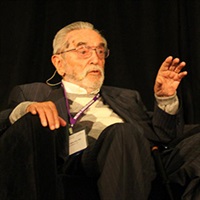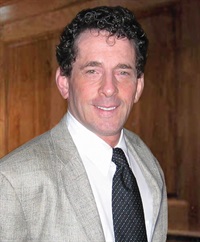EP13 Keynote 02 - The Craft of Family Therapy - Salvador Minuchin, MD
- Average Rating:
- Not yet rated
- Topic Areas:
- Family Therapy | Keynotes | Psychotherapy | Systems Theory | History of Psychotherapy
- Categories:
- Evolution of Psychotherapy | Evolution of Psychotherapy 2013 | Pioneers in Couples and Family Therapy
- Faculty:
- Salvador Minuchin, MD | Jeffrey Zeig, PhD
- Duration:
- 55 Minutes
- Format:
- Audio Only
- Original Program Date:
- Dec 11, 2013
- License:
- Never Expires.
Description
Description: In conversation with Jeffrey Zeig, Minuchin reflects on his life’s work and the evolution of family therapy. He shares how his early experiences shaped his belief in disrupting certainty and making families central to the healing process. The dialogue explores core principles of systemic therapy, the therapist’s role in shaping change, and the ongoing relevance of context and connection in clinical work.
Syllabus Description: Dr. Minuchin will be interviewed by Dr. Zeig about key concepts in his approach to family therapy. We will compare and contrast approaches. We will discuss developments in family therapy.
Educational Objectives:
- Describe an enactment.
- Given a family, describe how you would initiate an interview.
- List three developments in contemporary family therapy.
*Sessions may be edited for content and to preserve confidentiality*
Credits
Handouts
| Timestamped Transcript (634.7 KB) | 13 Pages | Available after Purchase |
Faculty

Salvador Minuchin, MD Related Seminars and Products
Salvador Minuchin, MD, developed Structural Family Therapy, which addresses problems within a family by charting the relationships between family members, or between subsets of family. He was Director of the Philadelphia Child Guidance Clinic. Although it was minimally staffed when he began, under his tutelage the Clinic grew to become one of the most modeled and respected child guidance facilities in the world. In 1981, Minuchin began his own family therapy center in New York. After his retirement in 1996, the center was renamed the Minuchin Center. Dr. Minuchin is the author of many notable books, including many classics. His latest is Mastering Family Therapy: Journeys of Growth and Transformation. In 2007, a survey of 2,600 practitioners named Minuchin as one of the ten most influential therapists of the past quarter-century.

Jeffrey Zeig, PhD Related Seminars and Products
Jeffrey K. Zeig, PhD, is the Founder and Director of the Milton H. Erickson Foundation and is president of Zeig, Tucker & Theisen, Inc., publishers in the behavioral sciences. He has edited, co-edited, authored or coauthored more than 20 books on psychotherapy that appear in twelve foreign languages. Dr. Zeig is a psychologist and marriage and family therapist in private practice in Phoenix, Arizona.


